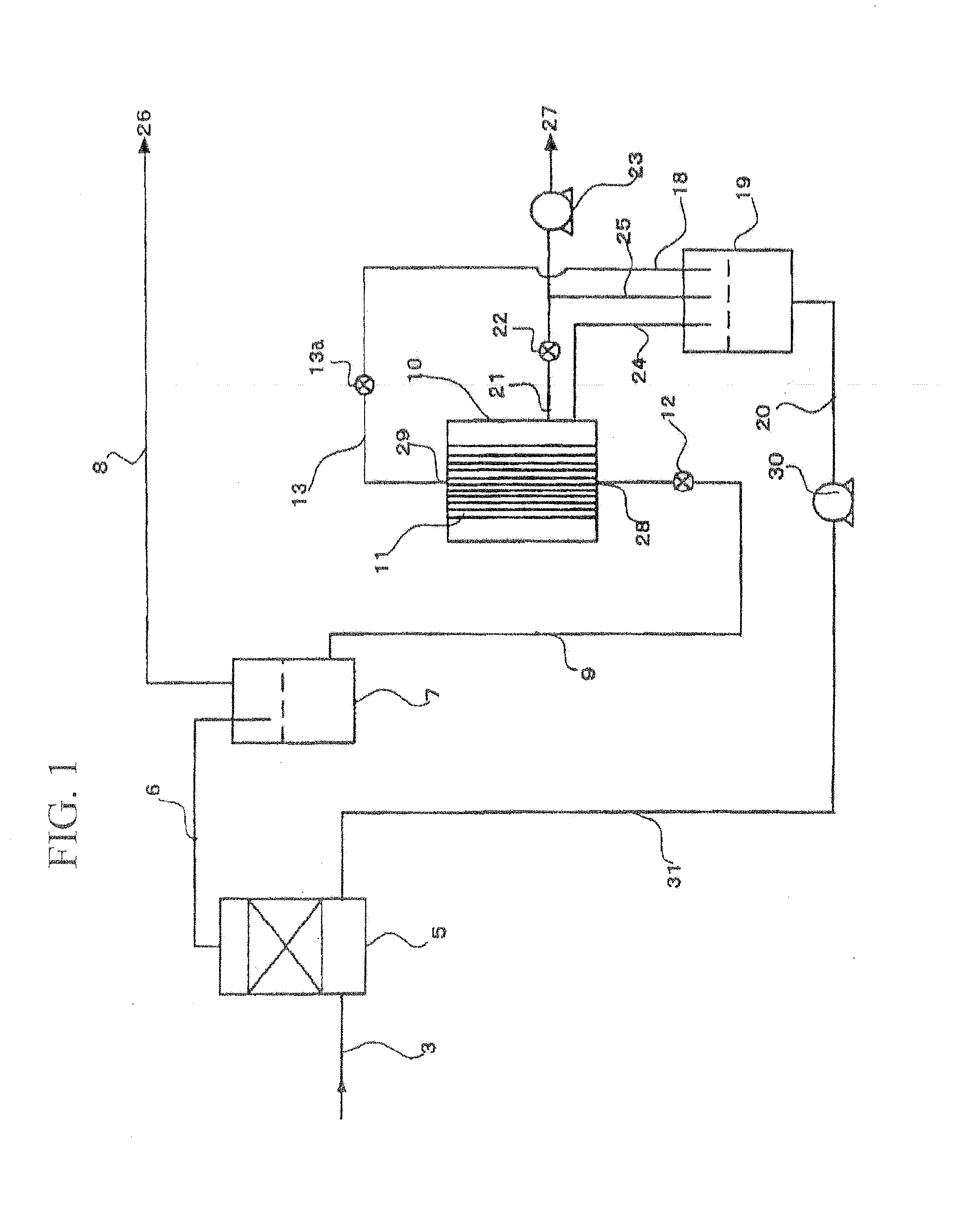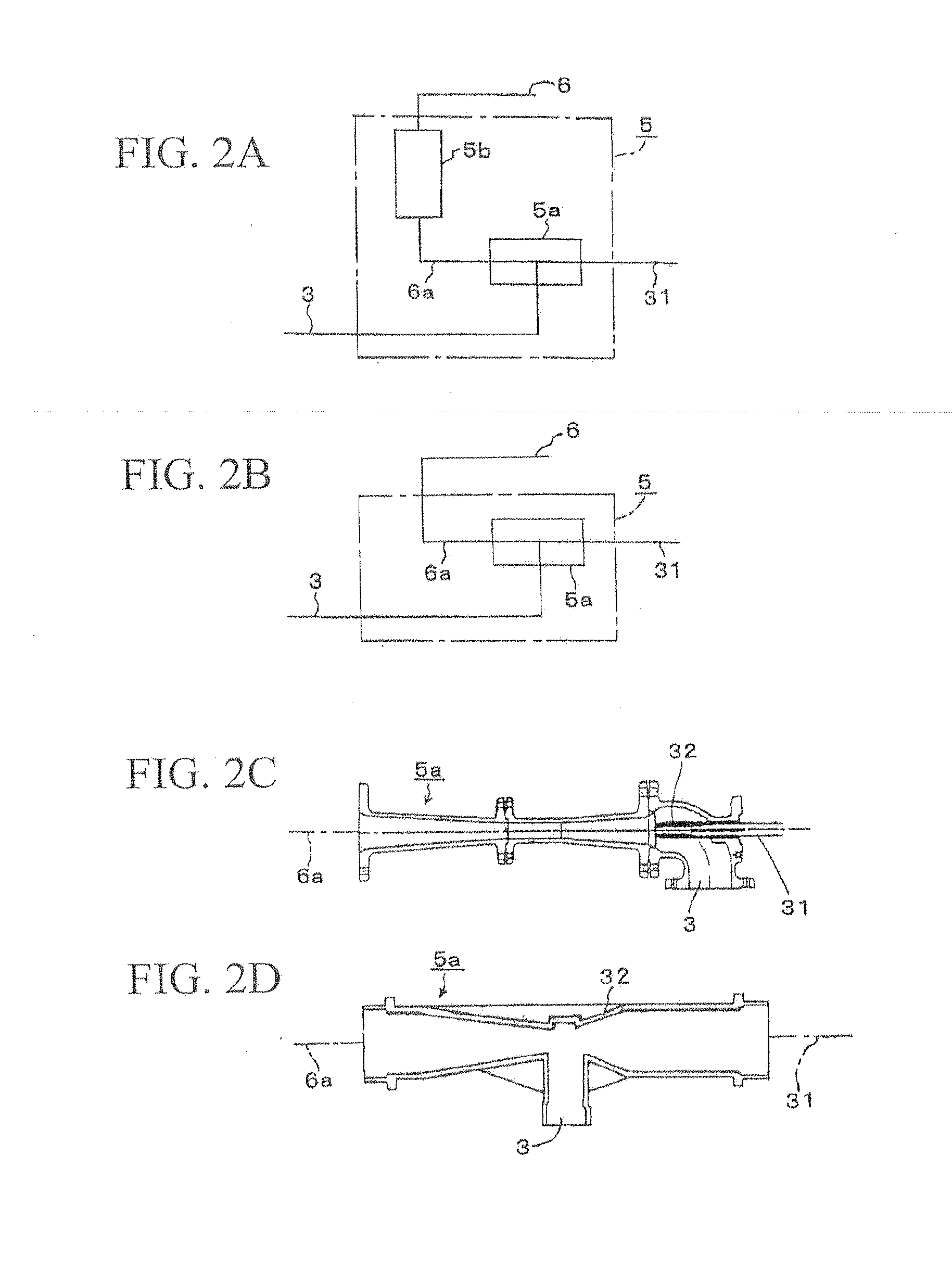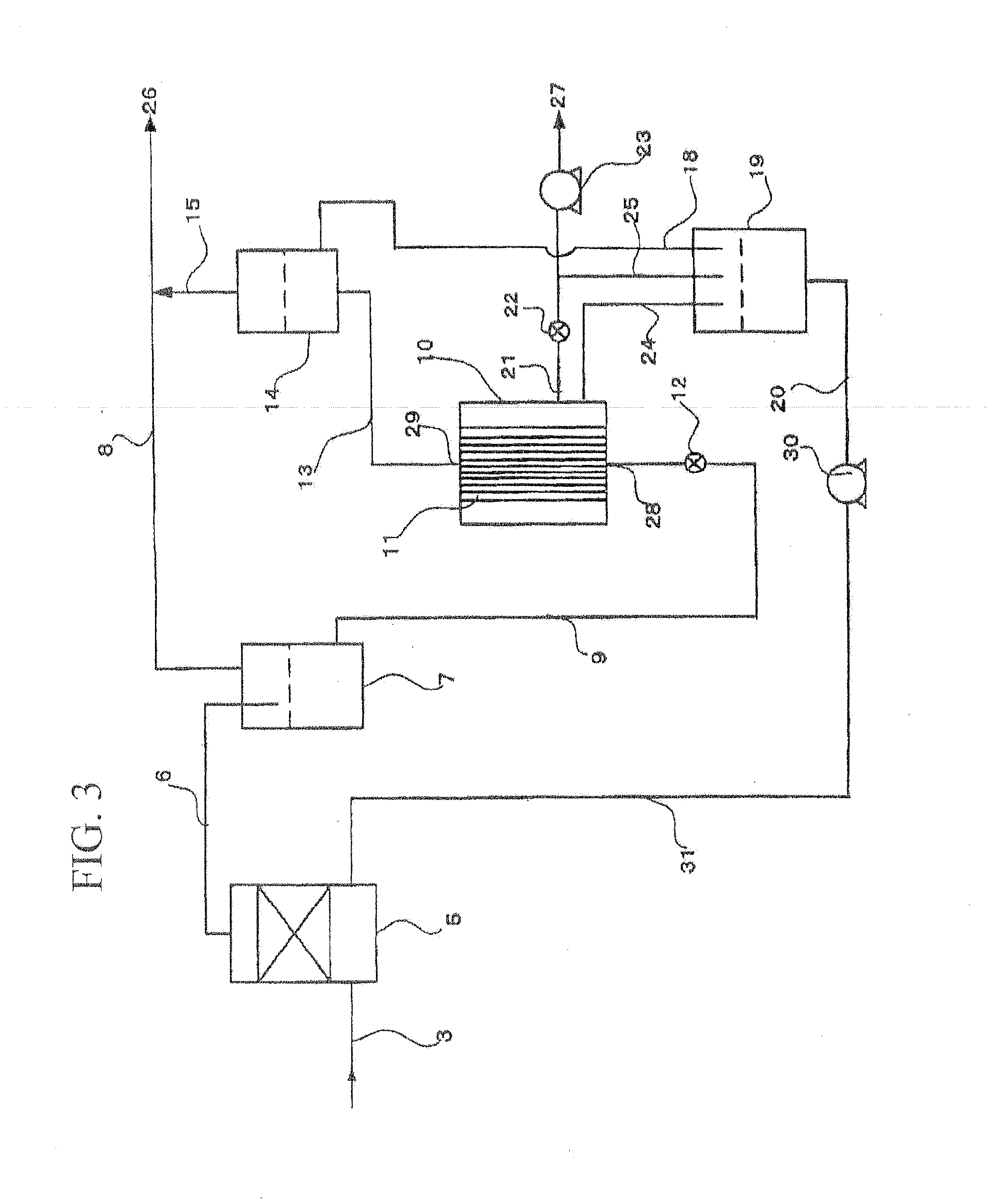Methane separation method, methane separation apparatus, and methane utilization system
a technology of methane separation and methane, which is applied in the direction of gaseous fuel, separation process, absorption purification/separation, etc., can solve the problems of gas separation operation cost, increase in initial cost, and large size, and achieve low separation cost, high efficiency, and reduce power load and membrane module cost
- Summary
- Abstract
- Description
- Claims
- Application Information
AI Technical Summary
Benefits of technology
Problems solved by technology
Method used
Image
Examples
example 1
[0097]In Example 1, comparison test of the concentration of methane concentrated by mixers of 3 different kinds of absorption systems was carried out by using the methane separation apparatus of a one stage separation system shown in FIG. 1.
[0098]FIG. 5 is a comparison chart of concentrations of the concentrated methane obtained by conducting methane separation from the absorbing liquid that absorbed carbon dioxide using mixers of 3 different absorption systems. The longitudinal axis indicates the concentration of concentrated CH4 (%) that is separated. The transverse axis indicates the required membrane area (m2 / (Nl / min)), which is the surface area of a permeable membrane per unit flow rate of a biogas to be treated. More specifically, the required membrane area is defined by the following equation: Required membrane area=(surface area of permeable membrane installed in membrane module) [m2] / (biogas treatment flow rate) [Nl / min], and the lower value of required membrane area means ...
examples 2 to 5
[0103]In Examples 2 to 5, separation and purification of methane were carried out using the methane separation apparatus of a one stage separation system shown in FIG. 1.
[0104]Tables 1 to 4 show details of the respective conditions, in which Examples 2 to 5 were conducted.
TABLE 1Biogas treatment flow rateNl / min0.67Degree of vacuumkPaG−90.2CH4 concentration%98.4DEA temperature° C.29CH4 recovery rate%99.5Membrane aream20.062Required membrane aream2 / (Nl / min)0.09Flow rate of permeatingL / m2 · min40.6liquid per membrane areaGas / liquid ratio (Nl / L)0.27Absorbing liquid3 mol / l-DEAHollow fiber materialPolyethylene φ0.7 mmMembrane effective length [cm]47Pore size [nm]250Membrane filling rate [m2 / m2]0.096
TABLE 2Biogas treatment flow rateNl / min0.67Degree of vacuumkPaG−91.3CH4 concentration%98.2DEA temperature° C.29CH4 recovery rate%99.6Membrane aream20.062Required membrane aream2 / (Nl / min)0.09Flow rate of permeatingL / m2 · min28.4liquid per membrane areaGas / liquid ratio (Nl / L)0.27Absorbing liquid3...
example 6
[0108]In Example 6, the methane separation apparatus according to the present invention was compared with the apparatus of a conventional methane purification system in terms of gas separation performance, purification cost, and the like.
[0109]Table 5 compares the methane separation apparatus according to the present invention with the apparatus of a conventional methane purification system in terms of gas separation performance, purification cost, and the like.
TABLE 5Comparison of each systemDry membraneChemicalseparationabsorption methodMembrane / absorptionItemPSA processprocess(diethanolamine)hybrid methodOperating pressureNormal pressure0.6 to 0.7 MPaGNormal pressureNormal pressure(desorption −90 kPaG)(desorption −90 kPaG)CH4 concentration90%90%90%90%CH4 recovery rate90% (CH470% (CH4≈100% (no dependence on≈100% (no dependence onconcentration 90%)concentration 90%)CH4 concentration)CH4 concentration)Required power [kW]21202017Power unit consumption [kWh / m3]0.390.480.330.28N.B.) Ca...
PUM
| Property | Measurement | Unit |
|---|---|---|
| DEA flow rate | aaaaa | aaaaa |
| DEA flow rate | aaaaa | aaaaa |
| flow rate | aaaaa | aaaaa |
Abstract
Description
Claims
Application Information
 Login to View More
Login to View More - R&D
- Intellectual Property
- Life Sciences
- Materials
- Tech Scout
- Unparalleled Data Quality
- Higher Quality Content
- 60% Fewer Hallucinations
Browse by: Latest US Patents, China's latest patents, Technical Efficacy Thesaurus, Application Domain, Technology Topic, Popular Technical Reports.
© 2025 PatSnap. All rights reserved.Legal|Privacy policy|Modern Slavery Act Transparency Statement|Sitemap|About US| Contact US: help@patsnap.com



